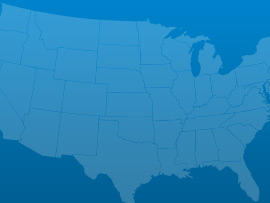Alabama is one of the few states that does not provide state capital to foster public transit options, which pushes most of the state to rely on personal transportation, yet Alabama does have 14 public transit providers, including 6 key transit systems. For Alabama’s transit bus fleet, proper and timely maintenance is key to extending the useful life of bus transit services and to keep ridership up. While most agencies are keeping up with maintenance by using fare revenue, large capital costs like bus replacements can be challenging. In fact, over half of Birmingham’s transit vehicles are nearing the end of their useful lives. However, some positive additions are moving forward like the onboarding of 30 new Flyer Excelsior Buses using natural gas to the MAX bus system.While transit access isn’t widespread, right-sized transit in certain areas is proving to be useful in Alabama communities, and many Alabama transit systems deserve credit for serving far more riders on their budgets when compared to other transit services nationwide.
 Aviation
Aviation Bridges
Bridges Dams
Dams Drinking Water
Drinking Water Energy
Energy Inland Waterways
Inland Waterways Rail
Rail Roads
Roads Transit
Transit Waste & Storm Water
Waste & Storm WaterA: Exceptional, B: Good, C: Mediocre, D: Poor, F: Failing, ?: Incomplete
Each category was evaluated on the basis of capacity, condition, funding, future need, operation and maintenance, public safety, resilience, and innovation
Aviation
75 public-use airports
Bridges
1,405 of the 16,078 bridges are structurally deficient
Bridges
$62.80 million in bridge funds came from the Federal Highway Bridge Fund in 2011
Drinking Water
$7.9 billion in drinking water infrastructure needs over the next 20 years
Energy
11.081 gigawatt-hours of renewable energy every year, ranking it 6th
Hazardous Waste
14 sites on the National Priorities List
Inland Waterways
1,270 miles of inland waterways, ranking it 6th nationally
Levees
17 miles of levees
Ports
69.5 million short tons of cargo in 2012, ranking it 12th nationally
Public Parks
$68.9 million of unmet needs for its parks system
Rail
24 freight railroads covering 3,254 miles across the state, ranking 17th nationally by mileage
Roads
$1.2 billion a year in costs to motorists from driving on roads in need of repair, which is $321 /yr per motorist
Roads
10,401 of the state’s 101,811 public roads are major roads, and 6% are in poor condition
Schools
$5.1 billion in estimated school infrastructure funding needs
Transit
6.6 million annual unlinked passenger trips via transit systems including bus, transit, and commuter trains
Wastewater
$4.4 billion in wastewater infrastructure needs over the next 20 years

March 03, 2017
As the President’s repeated in his address to Congress his pledge to dramatically increase infrastructure spending to the tune of $1 trillion, various Congressional Committees

March 01, 2017
On Tuesday night, President Trump addressed a joint-session of Congress for the first time in his presidency. Infrastructure was among the many issues he discussed.

February 28, 2017
U.S. motorists set a new record for vehicle miles travelled (VMT) in 2016, driving over 3.2 trillion miles, an increase of 70 billion miles from

February 17, 2017
Romantic dates, the Grammy awards and celebrating black history are not the only milestones of this week; the Oroville dam crisis in California and the